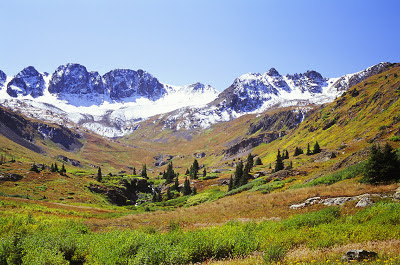This story tells of one of my favorite "Halloween finds". For those of you who may have missed it last year, enjoy this re-post of my tale from The Hungry Bear Cafe.
****
It’s mesmerizing, this steady beat of the windshield wipers as we travel along rain-slicked Highway 101 on the Olympic Peninsula. Tim and I are on our way to Rialto Beach in Olympic National Park on a dreary October morning.
“We should stop at an espresso stand for hot chocolate on a morning like this.” Tim says, “Espresso stands seem to be everywhere in Washington, there should be one around here somewhere.”
The rain continues and we motor west along Highway 101, but no espresso stands appear on this lonely stretch between Port Angeles and Forks. Near the Rialto Beach turnoff we pass an eating establishment—The Hungry Bear Cafe. It looks good enough to turn around and go back.
Halloween flags decorate the front of the cafe; we enter and find a life-sized Dracula inside the door. A diminutive, grandmotherly woman behind the counter sweeps her arm: “Sit wherever you’d like.”
 |
| The cafe's benign exterior belies the horrors waiting within. |
 |
| Whatever you do, don't order the soup! |
“Oh, we’re just here for a couple hot chocolates.” I say, as we glance around the empty cafe. Whoa! We’re standing inside “Grandma’s House of Horrors”—werewolves, skeletons, witches and monsters lurk in the corners and beside the tables; severed arms hang from the salad bar.
The Hungry Bear Cafe is full of the scariest Halloween mannequins imaginable. There’s Dracula, a pumpkin-head monster, a witch hovering over a caldron containing a severed head, a chainsaw massacrer, a man strapped to an electrocution board, a werewolf, and other spooky creatures.
 |
| Frankenstein reaches out for unsuspecting patrons. |
 |
I'd think twice about using the restrooms;
these two guard the entrance. |
The cafe’s owner, “Grandma”, tells us that she and her husband collect the mannequins and her son maintains them. “We’ve been collecting them for years. Some of them were quite expensive and several were featured in Hollywood films.” Grandma steps out from behind the counter and hands us our hot chocolates. “Go ahead, step on the buttons at the base of the mannequins.” We do as we’re told. The mannequins move, talk and shriek; the chainsaw massacre “man” moves and follows us with his life-like eyes.
This impromptu stop on a misty October day is better than any haunted house. And to top it all off, this creepy cafe’s hot chocolate is delicious.
 |
| "How about a hug?" |
 |
| "Care for a slice of pumpkin pie?" |
 |
| "I think I'll look for something toxic on the menu." |
For me, a serendipitous find like The Hungry Bear Cafe is what travel is all about. Have you discovered a novel eatery on your travels?
 |
| Have a howling good time on Halloween! |

























































